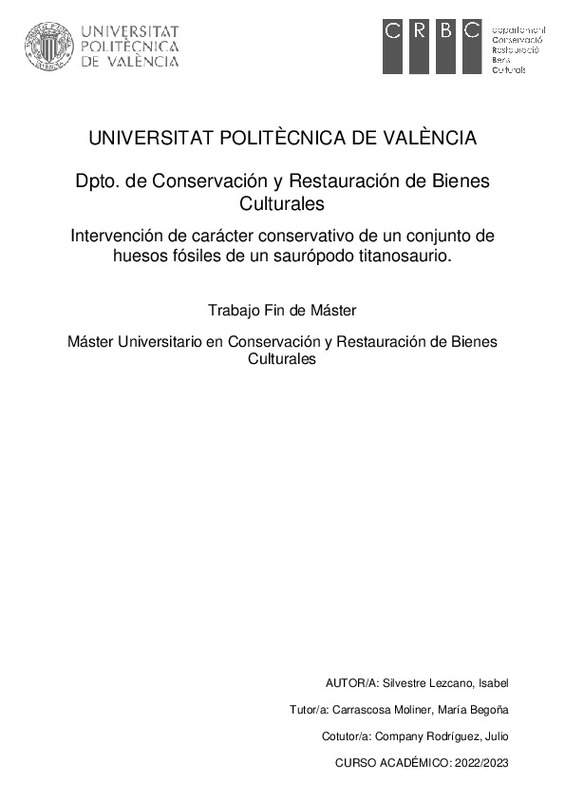JavaScript is disabled for your browser. Some features of this site may not work without it.
Buscar en RiuNet
Listar
Mi cuenta
Estadísticas
Ayuda RiuNet
Admin. UPV
Intervención de carácter conservativo de un conjunto de huesos fósiles de un saurópodo titanosaurio.
Mostrar el registro completo del ítem
Silvestre Lezcano, I. (2023). Intervención de carácter conservativo de un conjunto de huesos fósiles de un saurópodo titanosaurio. Universitat Politècnica de València. http://hdl.handle.net/10251/196754
Por favor, use este identificador para citar o enlazar este ítem: http://hdl.handle.net/10251/196754
Ficheros en el ítem
Metadatos del ítem
| Título: | Intervención de carácter conservativo de un conjunto de huesos fósiles de un saurópodo titanosaurio. | |||
| Otro titulo: |
|
|||
| Autor: | Silvestre Lezcano, Isabel | |||
| Director(es): | ||||
| Entidad UPV: |
|
|||
| Fecha acto/lectura: |
|
|||
| Resumen: |
[ES] Los restos paleontológicos tienen una gran relevancia a nivel científico e incluso cultural, ya que son evidencias de la vida en épocas pasadas que ayudan a comprender cómo era el mundo en aquellos tiempos remotos. ...[+]
[EN] Paleontological remains have an extensive scientific and cultural relevance, because they are the evidence of life during past eras and they help us to understand how the world was at those remote times. Therefore, ...[+]
|
|||
| Palabras clave: |
|
|||
| Derechos de uso: | Reserva de todos los derechos | |||
| Editorial: |
|
|||
| Titulación: |
|
|||
| Tipo: |
|







